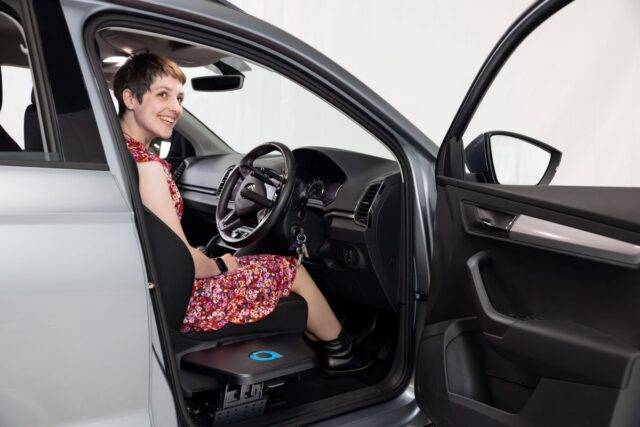Driving with Ehlers-Danlos Syndrome
With symptoms including joint hypermobility, skin hyperextensibility and tissue fragility, people living with Ehlers-Danlos Syndrome (EDS) can find everyday activities challenging. And that, of course, includes driving.
Impact on driving ability
EDS is a group of disorders that affect connective tissues, which support the skin, bones, blood vessels and other organs. Depending on the EDS type and severity, some people may experience symptoms that make driving difficult. These may include pain, dizziness, fatigue or problems with coordination and balance.
Legal considerations
It’s important to consult with your doctor about whether your EDS symptoms might impact your ability to drive. If there is a potential impact, you should inform the DVLA (DVA in Northern Ireland). The agency will then assess your situation, which may involve seeking advice from your medical team, and determine whether any restrictions need to be applied to your driving licence.
Informing the DVLA or DVA about your condition isn’t just a legal obligation. It’s also crucial for ensuring you can get the support you need to drive safely. Failure to disclose a relevant condition can result in a fine and may invalidate your car insurance.
Driving aids
Driving aids are instrumental for individuals with EDS who experience difficulties while driving. These tools can help manage symptoms that might otherwise make driving uncomfortable or even hazardous. A wide range of aids is available, from simple cushioning supports to more complex adaptations like hand controls or steering wheel aids.
Cushioning supports can help reduce discomfort caused by prolonged periods of sitting. Specialist steering wheel aids can provide better support for those with weak or painful hands, while hand controls can replace the need for foot pedals, useful for individuals with lower limb issues.
Some people with EDS may benefit from an automatic car, reducing the need for repetitive clutch use, which can exacerbate joint pain. Remember, you must notify the DVLA if you are using vehicle adaptations.
Financial assistance and driving assessments
In the UK, individuals with health conditions that affect their ability to drive can potentially receive financial assistance for vehicle adaptations through the Motability Scheme. This can be extremely beneficial for those with EDS who require adapted vehicles or specific driving aids.
Driving assessments, conducted by organisations such as Driving Mobility, can be useful for identifying challenges you may encounter and potential solutions. They offer practical advice and can suggest suitable vehicle adaptations, helping ensure safety and comfort while driving with Ehlers-Danlos Syndrome.
Conclusion
Living with Ehlers-Danlos Syndrome can present unique challenges when driving, but these are not insurmountable. By understanding and working within driving agency regulations, utilising driving aids and seeking appropriate advice and support, driving can become a manageable part of life for those with EDS. The key is to ensure you communicate with your medical team, the DVLA or DVA and support networks, making sure that you’re driving safely, comfortably and within the limits of the law.
More like this

News
We Become the Exclusive UK Distributor for Pimas Driver-Control Solutions
We’re excited to announce that Mobility in Motion has become the exclusive UK distributor for Pimas driver-control solutions, including the brand-new Voice Control system. This is…

Accessible travel
Motability Lease Extension Rule Changes
Thank you to Mobility in Motion for inviting MotaClarity back onto the blog, it’s always a pleasure to share updates with your community. Starting 16th…

Accessible travel
Adapting Your Own Car for Accessibility
At Mobility in Motion, one of the biggest misconceptions we encounter is the belief that only Motability Scheme cars can be adapted, or that you need…